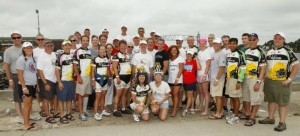
Video game consoles have captivated the minds of adults and children alike since Atari introduced Pong, a simple electronic tennis match, in 1973. Since then, gaming has spread to smartphones and tablets that eventually found themselves in classrooms. Video games became a difficult distraction to overcome, until educators started noticing how well video games held their students’ attention. Schools are now harnessing the power of video games to teach math, science, and reading. Video games have also entered the medical field and are showing promise in treating conditions that responds well to neurofeedback conditioning. A method that requires a patient to be hooked up to electrodes while playing a video game. In this way, the game can reward the patient with positive images or sounds in response to specific brainwaves. Video games are now treating anxiety, pain, depression, ADHD, and more.
Many of these games require a physical interaction between the person playing and the game console, be it through touching a screen, tilting a tablet or typing. With the rapid pace of technology, allowing us to interact with computers in previously unthinkable ways, it was only a matter of time before even physical interaction was no longer necessary. In recent years, electroencephalography (EEG) headsets have made it possible to control a game with your brainwaves. Making video games a viable tool to teach cognitive skills — the building blocks that allow us to think, read, learn, remember, reason, and pay attention. The EEG headsets also eliminate the need for cumbersome electrodes.
ATENTIVmynd™, located in Waltham, Massachusetts, has used this technology to create a game to treat any child who struggles with inattention. Everything we do depends on our ability to pay attention in different ways either through sight or sound. ATENTIVmynd™ Games uses a FOCUSforward™ methodology. The character only moves forward in the game if the player is paying attention and focusing on the movements of their avatar. Controlling the game in this way, sets up a reward system, which not only teaches children that paying attention has benefits, but also helps them improve their ability to focus on details. Along the way learners are challenged with tasks that teach other unique cognitive skills. The feedback happens in realtime, allowing children to boost attention levels and receive feedback from the game on those levels at the same time, so that they can make necessary changes to move up a level in the game. This feedback method is very different from similar cognitive training methods that only give feedback once a task is completed. Realtime feedback allows learners to push themselves further with full knowledge of what it will take to succeed up front.
ATENTIVmynd™ Games show promise in treating Attention-deficit/hyperactivity disorder (ADHD), a complex set of traits that if left untreated, can lead to depression and anxiety. Inattention and hyperactivity are key traits associated with ADHD in children and adults. A game that rewards for paying attention and helps sustain long periods of mental effort may be able to train patients that suffer with ADHD new coping skills. New skills learned in the game can improve outcomes at home, on school work, or on the job later in life.
As a professional writing service company that creates training manuals, white papers, and medical journal articles, we like to stay on top of the latest technology in and around the Boston area. Do you have an emerging technology you would like us to profile? Let us know on Twitter @Tra360 or Facebook.




